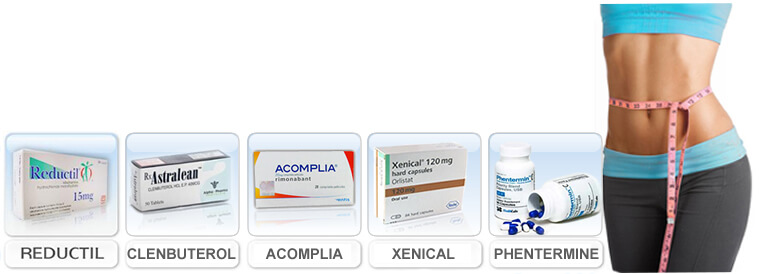Reductil – A Chemical Analysis
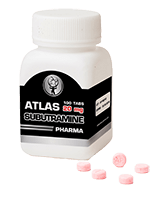 As with almost every other pharmaceutical grade medication you’ll encounter, Reductil is simply the “commercial” name for this particular item – its “true” scientific name is sibutramine hydrochloride (the structure of which can be observed here.)
As with almost every other pharmaceutical grade medication you’ll encounter, Reductil is simply the “commercial” name for this particular item – its “true” scientific name is sibutramine hydrochloride (the structure of which can be observed here.)
Before we discuss this particular element any further though, we should first look at the effect it has on the body’s serotonin and noradrenaline levels, as this “effect” is precisely how the positive results from using reductil arise.
In the case of the former hormone, serotonin is used as a means of regulating digestion, stabilising mood, regulating appetite and enhancing energy levels amongst other positive traits.
Serotonin is a derivative of the essential amino acid tryptophan. Ordinarily, when serotonin is released into the system, it will positively impact the above mentioned aspects of functionality for a sustained period of time before being “recalled” back to whence it came, thus leading to a diminished level of serotonin once again resuming within the body.
When this diminished level returns, you’ll find that everything from your mood to your resistance to hunger will start to decrease. This is actually normal, as it is the body’s “natural” means of self-regulation.
Should your levels of any hormone be elevated to an indefinite degree, it probably goes without saying that you’d become somewhat resistant to its effects over time – this is in part why the body regulates itself in such a manner, but we’ll discuss this in more detail in the upcoming side effects section.
Sibutramine serves as an uptake “inhibitor”, meaning that serotonin is unable to be recalled, thus leading to a constant elevation of serotonin within the body.
It almost exactly replicates this effect with the catecholamine noradrenaline (also known as norepinephrine.)
This substance is responsible for the regulation of the cardiovascular system and serves to counteract against any issues that may lead to a lack of balance (homeostasis) within the body in regards to metabolic function and blood flow, amongst many other elements, by working synergistically with adrenaline (see the norepinephrine link.)
Again, under ordinary circumstances, noradrenaline would be released in conjunction with serotonin to help stabilise hunger, energy levels and mood before a “dip” would take place – thus signalling the release of ghrelin (the hunger hormone) and the necessitation of another intake of calories.
When you throw sibutramine into the mix however, you then (in the exact same fashion as the inhibition of serotonin uptake) “block” the “re-integration” of noradrenaline back into the system.
This again means that its effects are sustained within the system. What you’re ultimately left with is:
- An almost constant elevation of mood
- An almost constant elevation of “energy”
- An almost constant satiation of hunger
- Enhanced metabolic output (though not to the degree of a product like triiodothyronine / thyroxine – see their separate profiles for more information)
In theory then, this is a fantastic medication. Taking it is going to lead to you avoiding hunger pangs and therefore overeating whilst making you feel “positive” and “energetic” in the process.
These positive traits are also the precise reason why there is also a moderate degree (at least) of associated risk with taking the product. With the elevation of so many elements of the inner working of the body comes an elevation of “resources” and “output” needed to maintain them.
All in all, it places excess pressure on the cardiovascular system and heart.
This is precisely how the medication ended up being banned, as it was shown to increase the risk of adverse issues arising in those with elevated blood pressure. It was also shown (as you might expect) to increase blood pressure in its own right and lead to an elevated risk of heart attacks and strokes.
Respectively, the administration of sibutramine affects the “re-uptake” of norepinephrenine levels by 73%, and of serotonin by 54%.
This is actually a dramatic difference when compared to normal levels, and if we were to say translate this efficiency to (for instance) anabolic steroids and we observed an increase in muscle mass of even the minimal 54% figure, this would lead to differences in musculature beyond comprehension.
Whilst we’re obviously not dealing with muscle mass increases in this instance – a 54% “improvement” in the effects of serotonin (or any hormone / enzyme for that instance) within the system alone would be conducive to significant physiological differences within the body.
In short – despite its flaws (in terms of potential side effects), this product is going to work to a potent degree.
Unlike many other diet pills you may encounter, the only active ingredient in reductil 15mg pills (reductil is another “commercial” name for sibutramine) is in fact sibutramine. It doesn’t matter which variant you purchase (sibutramine itself or sibutril / meridia being prime examples of popular alternative names), you’re simply getting the same product. All of these variants are just sibutramine being marketed under a different name.
This is often the case with “true” pharmaceutical grade compounds as opposed to the over the counter diet pills you may be used to purchasing; they contain a very minimal (often one singular) array of ingredients.
This is because many of the easily accessible alternatives come from companies who are looking to “mimic” the effects of synthetic hormones without actually going through the expense and “technicalities” involved in producing them.
Being that synthetic hormones can’t really be “matched” by nature, it often means that a concoction of several organic compounds is needed to achieve even a halfway comparable beneficial effect.
There are actually many counterfeit options of this particular product (sibutramine) on the market that do not represent the effects on offer by the “original” blueprint very accurately (they largely contain plant based / organic extracts as per the previously mentioned over the counter items), and we’ll now make you aware of what they are if your intent is to solely utilise the real version for its enhanced benefit.
Phen 375 And Other Popular Reductil “Alternatives”
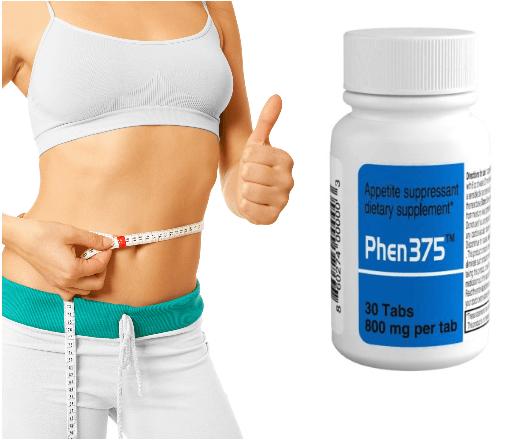 Phen 375 markets itself as a “legal” and safer alternative to reductil owing to the fact that it contains a list of ingredients designed to help suppress appetite and enhance fat burning / metabolic output.
Phen 375 markets itself as a “legal” and safer alternative to reductil owing to the fact that it contains a list of ingredients designed to help suppress appetite and enhance fat burning / metabolic output.
Of these two elements, we can certainly say that neither of them is false. It is legal to purchase, and it is theoretically safer. However, it is absolutely not by any stretch of the imagination a comparable and effective alternative to reductil.
Amongst the included ingredients are L-carnitine, Cayenne / capsicum (as in the pepper in extracted form) and citrus aurantium (bitter orange extract.) All of these components (and several of the others included in phen375) have been linked with having favourable effects on weight loss.
Whilst this is a small observation, one of the first conspicuous elements a trained eye will notice when looking through the list of ingredients (especially in the case of bitter orange peel and cayenne pepper) is that the manufacturers have (probably) purposefully given what are ultimately very simple compounds their full “scientific” name.
What’s the significance of this?
If they’d simply put “bitter orange peel” and “cayenne pepper” on the packaging, then the average prospective “slimmer” would soon lose interest upon seeing what are ultimately very normal and easily replicable ingredients.
This “mystification” of ingredients carries into the stimulant orientated aspects such as the inclusion of caffeine powder anhydrous (capsicum frutescens.) This is just caffeine, but taking one look at its name on the label would make the average buyer believe it’s something highly “technical” and therefore potently effective.
In reality – caffeine is a viable stimulant. It can indeed reduce hunger levels. But this effect can easily be achieved by drinking a cup of black coffee too.
Another prominent ingredient is coleus forskohlii (again being featured with a needlessly extended name.) When observing the included link, it (like almost all of the other included ingredients) becomes clear that it may provide beneficial effects in regards to testosterone release and fat loss.
Theoretically, this is great. But the key word to observe here is “theoretically” – that’s a running theme with this and pretty much all other diet pills you’ll buy over the counter.
This profile should be viewed as neutral in terms of whether or not the author or this website believe that you personally should take a product like reductil – we simply provide the necessary information for you to make an informed decision before deciding (or not deciding) to purchase it.
Despite this, we can definitely state with confidence that due to a wealth of case studies, the effects of reductil are not particularly open to any “theoretical” interpretation.
Those treated with this medication under tested conditions commonly lost between 5 – 10% of their overall body weight. On balance, it’s going to be almost impossible for you to find any genuine weight loss results reported through a properly tested scientific trial for either Phen 375 or any other over the counter diet pill.
You’ll find a wealth (in some cases not many) of positive “user” reviews about them, but you need to keep in mind that these reviews have (a) probably been paid for, and (b) are completely false / engineered by the manufacturers.
It’s fair of the manufacturers of phen 375 to claim that it might work – but it’s a big “might” to say the least. They’ve simply pieced together a compound based on theoretically effective ingredients that are difficult to rebuke whilst relying on a lack of knowledge on the part of prospective buyers.
There’s also one big ingredient to take into consideration with most if not all of these products too – this ingredient is of course caffeine.
As previously mentioned, anyone who has his or her morning coffee knows that it can provide surplus energy. This is what makes it such a “no-brain” ingredient for inclusion in diet products.
It is one of the only natural / organic compounds that can make you immediately “feel” its effects. You might get a moderate “buzz” from ingredients like bitter orange peel but when they are combined with caffeine it puts the body into an “excitable” state.
This genuinely leads to the consumption of more calories, but at large it also has a placebo-like effect whereas the user truly “believes” that they can feel fat burning processes taking place when in actual fact they are simply experiencing a caffeine “high.”
It’s accurate to state that in conjunction with a caloric deficit and exercise, the metabolic spike that phen 375 delivers may lead to weight loss, but it’s far from the “insurgency” on offer by reductil whereas it actually alters the internal infrastructure of the body forcibly.
It’s important that you understand these principles in regards to not only this but all other diet pills so that you can avoid being duped in the future. Some compounds (like reductil) are difficult to get their hands on because they’re truly very powerful. Hence why they are often so restricted.
With great power comes great responsibility.
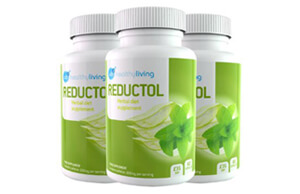

Reductol
This product is again a concoction of theoretically effective natural ingredients combined with multiple sources of caffeine to provide a stimulant-like effect.
Of particular note in this instance is the fairly shameless capitalisation of the reductil name whereas the manufacturer has simply removed the “i” and replaced it with an “o” in the hope of tricking would-be reductil buyers into purchasing their product.
In conjunction with this name capitalisation is the fact that the manufacturer also clearly intends for people to hold the products on a level ground to each other.
Again, we must state that those eating healthily and exercising regularly may indeed experience positive benefits as a result of using reductol, but this does not in any way dictate that it is in any way comparable to reductil.
The two products are worlds apart for the same reasons specified in the phen 375 profile above.
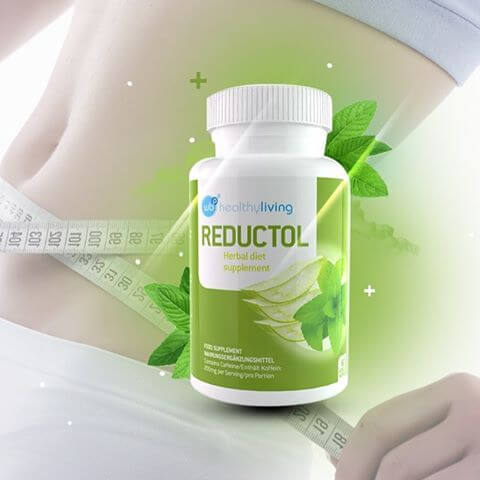
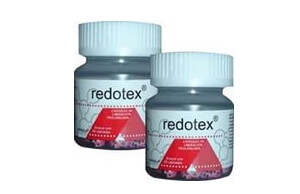

Redotex
The main ingredients in this product are norpseudoephedrine (a natural amphetamine), triiodothyronine (see the profile on thyroid hormones for more information), alona, atropine sulphate and on occasion diazepam.
This means that the body is provided with a powerful combination of both “uppers” and “downers”.
It’s really quite difficult to understand the rationale behind the formulation of this product, but it would appear that perhaps the intent was to provide a means of “relaxing” the digestive tract whilst the metabolic “enhancers” did their work and sped up the digestion process, thus providing a double “edged” means of utilising and ridding the body of food.
It’s also safe to say that the enhanced state of inner “ambience” on offer here would without doubt assist with the reduction of cravings owing to a fairly stress-free internal state.
All of this activity would almost definitely combine to lead to extra calories being burned and a reduction in binge eating.
In the particular case of triiodothyronine, it’s actually one of the most powerful metabolic enhancers on the planet in its own right, so the efficiency of this particular item (redotex) in regards to boosting the metabolism cannot be denied owing to the inclusion of this one ingredient alone.
The problem at large with this product lies in its combination of ingredients. It’s almost like someone came along and decided to ensure that one half of the ingredient list could achieve certain benefits, and the other half could achieve completely contradictory benefits.
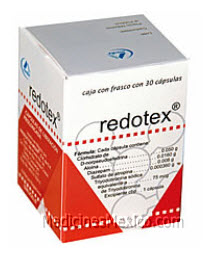 All of this internal “chaos” would undoubtedly lead to calories being burned, but not necessarily for the right reasons. A great deal of the spike in activity on offer could genuinely be due to the fact that the independent ingredients were “competing” for effectiveness within the system.
All of this internal “chaos” would undoubtedly lead to calories being burned, but not necessarily for the right reasons. A great deal of the spike in activity on offer could genuinely be due to the fact that the independent ingredients were “competing” for effectiveness within the system.
It would be highly likely that a user faced adverse issues of a heightened nature when compared to implementing most “normal” pharmaceutical grade fat burners.
The rather bizarre cocktail of medications included in redotex makes it incredibly difficult to discuss its intricacies in a neutral fashion without stating that it’s genuinely (probably) a product that’s better left alone.
Sometimes, the potential risks really do greatly outweigh the rewards.
What About Reductil Vs Alli (Orlistat)?
I heard Alli was pretty good for weight loss…
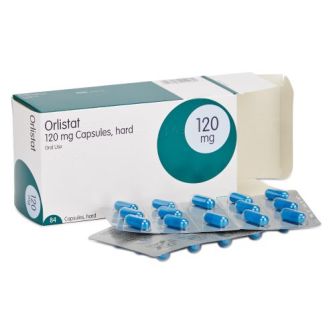 Orlistat is similar in nature to redotex in that it is powerful in its own right, but it functions in a completely different manner to sibutramine / meridia.
Orlistat is similar in nature to redotex in that it is powerful in its own right, but it functions in a completely different manner to sibutramine / meridia.
Please note that pharmaceutical grade orlistat is known as “Xenical” whereas the over the counter variant contains exactly half the dose and is known as “Alli.”
How orlistat achieves its weight loss results is by “sitting” in the gastrointestinal tract and directly blocking the absorption of dietary fat as a result of inhibiting the functionality of the key enzymes involved in the fat digestion process.
This process actually very closely mimics the inhibition of serotonin / noradrenaline reuptake on offer by reductil except the two methods of action affect the body very differently.
One (reductil) will lead to the suppression of appetite and the enhancement of mood, whereas the other is designed purely to block “fat” at the source and ensure that it cannot enter the body.
This does mean that orlistat is somewhat more “friendly” in terms of adverse issue risk, but many also believe that it is a little less effective than reductil.
Overall effectiveness would of course depend on one’s dietary and exercise habits; they could both lead to noticeable weight loss when used as part of the right “infrastructure.”
So In Summary… How Does Reductil Actually Work When
Compared To These Other Products?
It isn’t going to enter the body and agitate your processes in such a way that your metabolism revs up to extreme excess or you’re likely to be faced with the kind of “nervous”, “jittery” energy often encountered when using many other diet products.
That’s not to say that it won’t lead to a state of mild / moderate anxiety or nervousness whatsoever – this is always likely to be a natural byproduct of using any item designed to modify the circulatory system and inner processes of the body via amplification.
In this instance though, these aspects should be far more “sedate” when compared to the likes of the thyroid hormones (especially triiodothyronine), which is going to have an incredibly powerful impact on energy levels in terms of delivering a huge surplus of metabolic activity.
Reductil is a little more “laid back” in its approach although it’s still respectably potent…it simply serves to ensure that the “bits” of you that make you feel good / satiate hunger are amplified beyond normal means, but it doesn’t deliver these end results via synthetic insemination.
It works with the body’s natural resources and multiplies them – at all times though, these resources are organic rather than exogenous.
When comparing the metabolic potency of reductil to T3 (triiodothyronine) the difference in metabolic output is somewhere in the region of a 5 – 10% increase with reductil and anywhere from 15 – 21% with T3.
This should help to provide you with a reasonable idea in regards of what to expect in terms of side effects and strength (we’ll outlay these side effects in specific detail shortly.)
In either case, any forced increase of the circulatory system is of course going to interfere negatively with blood pressure – hence the negative reports (which are fairly synonymous with either product) and the recommendation to avoid either product if you suffer from high blood pressure.
